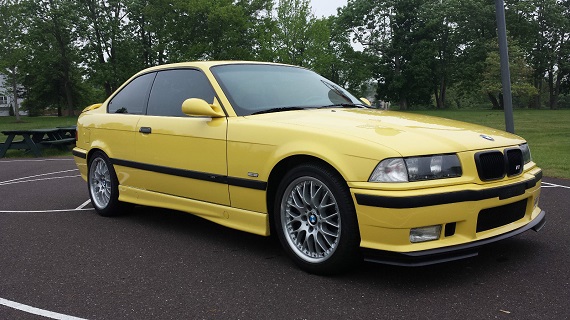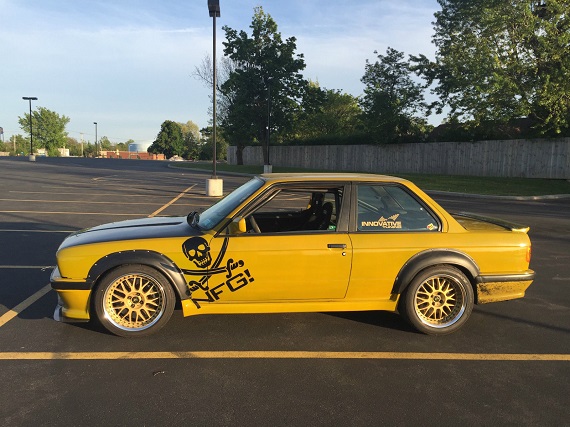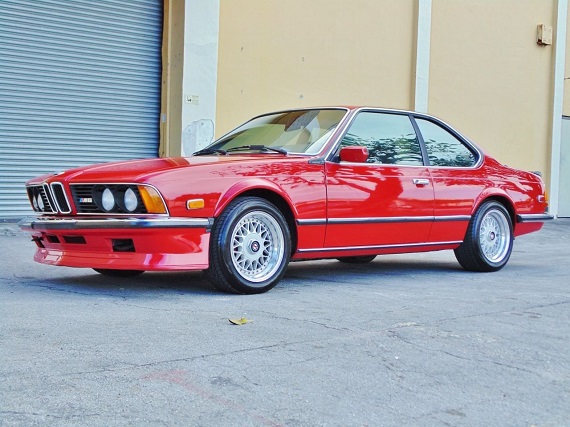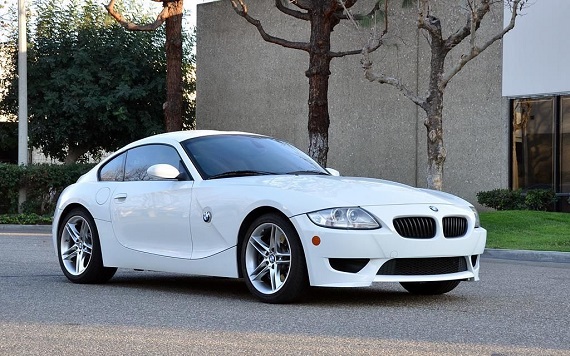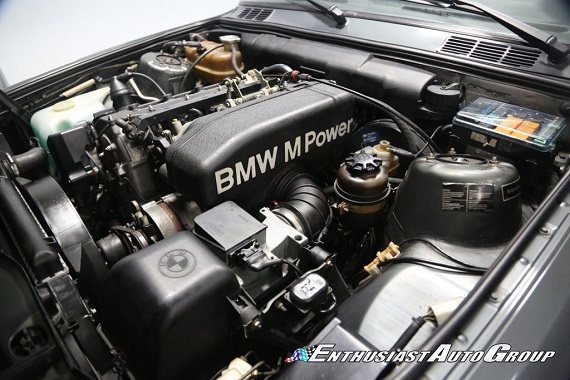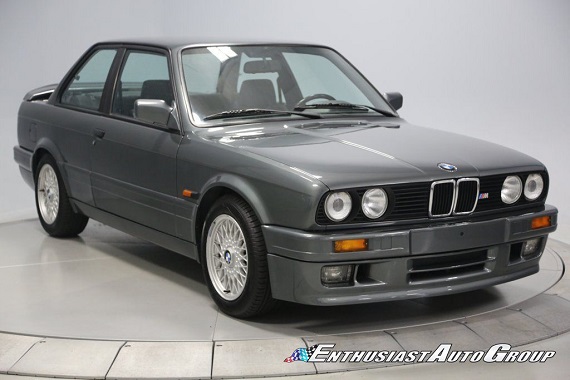You’d be forgiven for thinking that the last day was the “24 Hours of E36 M3” here at GCFSB. But, as both Andrew and Paul have pointed out, it’s a great package that offers competent performance, a budding aftermarket support for parts, modifications and maintenance, and still can be run as a daily driver. They are, perhaps, almost a bit cliche; the E36 M3 became the go-to, market defining package and continues to this day to set the bar. It seems there’s one on our page weekly, yet the brace of examples that precede this post offer us the opportunity to compare values. This particular M3 Coupe is offered in retina-burning Dakar Yellow with the blackest of black interiors:
Tag: Motorsport GmbH
This isn’t the first time I’ve written up sacrilegiously swapped cars, so it’s probably no surprise to see two Japanese-powered BMWs pop up. And in each of their own ways, neither is on the surface, at least, a car we’d typically cover. But before you judge a book by its cover, are either of these cars executed well enough to be a neat package?
CLICK FOR DETAILS: 1987 BMW 325is on eBay
Comments closedAn odd reversal has occurred in the BMW world; go back even five years and the car from the 1980s – outside of the M1 – was the M6. Now, oddly, the M6 may be the best value going in Motorsport BMWs from the 1980s. What caused the turn around? Well, it certainly had little to do with the M6, and probably more to do with the inevitable acknowledgement that the more rare M5 was a great car too, and the E30 has equally gained status as – effectively – a 911 replacement. So the M6, the grandest of BMW’s grand touring lineup, has become relatively affordable for the performance level offered. The extra benefit of it’s high residual price has been that most have been kept in excellent condition overall; while it’s normal to see highly modified or ratty M3s and M5s, finding pristine M6s almost seems cliche; odd, considering the relatively low number produced. Even more affordable than the later M6s was the M6 prototype; the M635CSi. While never imported to the U.S., a fair amount made it here through the grey market long before the M products debuted in this market. With an even more potent version of the inline-6, the M1-detuned M88/3, coupled with lower weight, these early M6s were even more impressive performers than the later cars. However, unlike the later M6s, finding clean and unmolested M635CSis is more difficult as lower residual value on the grey market cars meant they were sometimes neglected or more heavily modified:
CLICK FOR DETAILS: 1985 BMW M635CSi on eBay
9 CommentsMy wife and I had a rather amusing conversation yesterday. It started via text; shortly after Rob’s 2PM post on the 1988 Porsche 911, I received a text message from my wife. “How much does a new 911 cost”, she asked. Now typically I know questions like this are leading somewhere and she’s not a huge Porsche 911 fan, so after some inquiry she asked why the asking price on a 1988 example was over $60,000. She said, and rightly so, why would anyone pay $60K for a near 30 year old example – even if it was quite pretty – when you could just about buy a new car for that amount. After I said that the Porsche 911 market was the new Tulip craze, she said two really funny things. First, she said “Let’s not base our economy on it!”, something that got me laughing. Then she said that if it was so popular, why were manufacturers like Porsche building new examples of their old cars? The answer, as we discussed, was that it just wouldn’t be profitable. Though limited run manufacturers such as Singer and Eagle have seen success building “new” old cars, the reality is that between making cars safe enough and economical enough to meet today’s standards, they’d be heavy and slow – necessitating even more power, which would raise the price. Take the GT86/FR-S/BRZ clones; while critics have loved their handling and prices have been kept reasonable, they’re generally referred to as “slow” cars with 200 horsepower and 2,700lbs of curb weight – nearly identical to what the 1988 Porsche Carrera was specified at.
However, there are options outside of the 911 market for a personal sports 2-door that throwback to simpler times, and I think the M Coupe was one of the best. With a gutsy inline-6 up front, rear drive and a 6-speed manual, the E86 was a classic blueprint for a sports car. But it was modern at the same time, with over 300 horsepower from the sonorous S54 M motor and a thoroughly modern design. It was also a relatively limited run vehicle, meaning they’re rare to see. Yet, despite this they’re still relatively affordable as a not-particularly-old future classic that can be driven and enjoyed – and will likely appreciate:
CLICK FOR DETAILS: 2008 BMW M Coupe on eBay
1 CommentThere’s something I can appreciate about the 320is versus the M3. On the surface, the M3 with its iconic boxflares and big wing is the DTM star you want, right? But if you’re a connoisseur and you’re looking for the driving experience, the narrow body 320is offered nearly the same experience. Sure, it was down a bit on power thanks to the destroked 2.0 S14 compared to its more illustrious brother. But it was lighter too, being a base model. The same thing happened in the Audi Coupe world in the 1980s; on paper, the Quattro was the model you wanted. However, if you were an enthusiast, the last of the 1987 Coupe GTs offered the same performance as the Quattro did thanks to their lighter weight and upgraded engine over earlier models. The result is that these narrow-body cars offer discrete performance in a less showy package for those in the know. aSo that means that the 320is is a lot cheaper than a normal M3, right? Not so fast….

